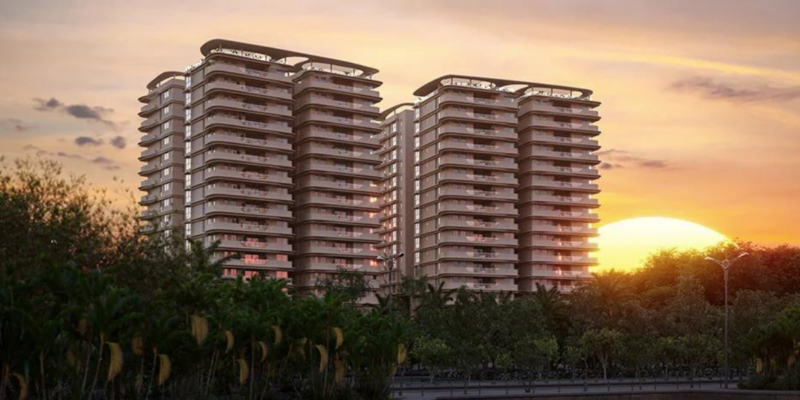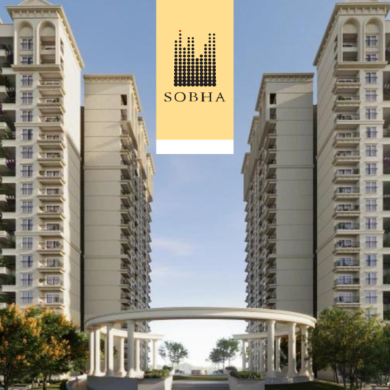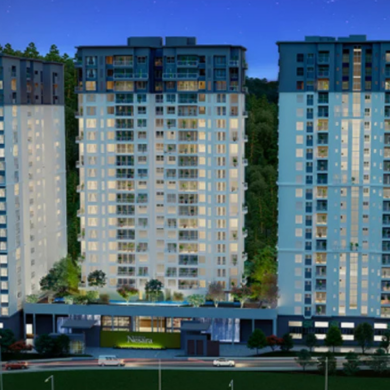
The National Building Code of India (NBC) is a crucial document for building structures, ensuring health and safety for occupants and the public. It was first released in 1970 and updated in 1983, with the most recent revision in 2005.
Table of Contents
Introduction to the National Building Code of India (NBC)
The National Building Code (NBC) is a document that offers instructions for building structures such as homes, businesses, institutions, schools, stores, and even hazardous constructions. It is crucial to abide by these rules since they are designed to preserve the building’s general health and guarantee the occupants’ and public safety. The NBC requirements for residential structures will be covered in this article. These uniform codes were initially released in 1970 and later changed in 1983.
Importance of NBC in Construction and Development
Building codes are a collection of rules that the governing body uses to control construction activities toto ensure that building occupants have minimal safety and welfare.
The building code combines administrative rules with fundamental construction criteria. By definition, the building code is a collection of municipal regulations that specify how structures must be planned or built, emphasising the integrity and quality of the finished result.
What Are Residential Buildings as Per NBC?
The structures where individuals may stay temporarily or permanently and have a place to sleep are residential buildings, as per NBC. This may or may not include cooking and dining facilities.
What Are the Types Of Residential Buildings As Per NBC?
These include bungalows, private homes, apartments, hostels, hotels, cottages, and villas. They can further be categorised into:
- Family-owned residences.
- Flats.
- Hotels.
- Residences.
- Guest Houses.
- Dormitories
NBC General Requirements for Residential Apartments
-
Zoning And Land Use Regulations
Zoning and land use regulations under India’s National Building Code (NBC) play a pivotal role in shaping urban development across the country. These regulations provide a framework for local governments to allocate and control land uses, ensuring orderly growth and authorised public welfare.The NBC categorises land into different zones, such as residential, commercial, industrial, recreational, and mixed-use zones, each with specific guidelines regarding permissible activities, building height limits, parking requirements, setbacks, and density controls.
These regulations balance economic development with environmental sustainability by promoting efficient land authorised while safeguarding public health and safety. Furthermore, they foster socio-cultural harmony by facilitating the integration of various land uses in close proximity within urban areas.
The NBC’s emphasis on zoning and land use regulations reflects a professional approach on an authorised need for comprehensive planning to create livable communities and vibrant cities in India.
-
Building Setbacks and Height Restrictions Under NBC (National Building Code)
Setbacks typically refer to the minimum distance between the building and its boundaries or adjacent structures. This ensures proper ventilation and natural lighting and allows for creating open spaces for recreational or landscaped purposes.
Height restrictions control the vertical scale of buildings in relation to their surroundings, preventing overcrowding and excessive shadows cast on neighbouring properties.These regulations contribute to sustainable urban development and prioritise public well-being by ensuring fire safety measures are adhered to, reducing noise pollution levels, and promoting pedestrian-friendly environments.
-
Safety And Security Measures Under NBC (National Building Code)
Safety and security measures as per NBC (National Building Code) India uphold the highest standards of protection for individuals and communities. The regulations prescribed by NBC India encompass various aspects, including fire safety, structural stability, evacuation plans, and electrical installations.
To ensure fire safety, the code mandates the provision of adequate firefighting equipment, appropriate building materials with fire resistance properties, and adherence to compartmentalization techniques to prevent fire spread.
Structural stability is prioritized through rigorous inspections during construction phases and periodic evaluations thereafter. Evacuation plans are formulated to facilitate swift evacuation during emergencies while considering factors such as occupant capacity and accessibility requirements.
Electrical installations are closely regulated to minimize potential hazards associated with faulty wiring or overloaded circuits. With an ardent focus on comprehensive safeguards, NBC India diligently promotes a secure environment that effectively mitigates risks to life and property across all types of buildings in the country.
-
Fire Protection and Emergency Exits Under National Building Code
Before issuing the building permit, apartment buildings with more than three stories above ground level must receive a certificate of approval from the Director of the Fire Force or an official designated by him. All additional fire safety criteria must follow section IV, Fire Protection, of the Indian National Building Code.
Every level of a residential building with a floor area larger than 150 square metres and a capacity to house more than 20 people must have at least two doorways as far away from one another as possible. As stated by the National Building Code, a fire staircase must be supplied on at least one staircase. If any two sides of a staircase are entirely left exposed to outside open space, this rule shall not apply.
-
Environmental Sustainability Guidelines Under National Building Code
As per the National Building Code (NBC) of India, environmental sustainability guidelines are crucial in ensuring responsible construction practices that minimize environmental impact. These guidelines emphasize energy efficiency, water conservation, waste management, and pollution prevention as fundamental principles that must be incorporated into building designs.
The NBC encourages using renewable energy sources such as solar and wind energy, promoting green spaces, rainwater harvesting systems, waste segregation facilities, and efficient ventilation systems. These guidelines aim to minimize carbon emissions by adopting energy-efficient technologies and fostering sustainable resource management throughout a building’s lifecycle.
NBC (National Building Code) Guidelines Related to Kitchens
- Every kitchen must have a sink with a good connection to drainage where utensils may be washed.
- A non-permeable floor must be placed in the kitchen.
- The kitchen cannot be less than one square metre and must open into an internal or external open area.
- The kitchen shouldn’t have a shaft-opening door.
- In structures taller than 15 metres, chutes are not permitted.
NBC (National Building Code) Guidelines Related to Bathrooms
- An access point to the outside should be located on one of the walls. A minimum of 0.37 square metres should be allotted for ventilation or windows.
- Bathrooms must always be above other bathrooms, laundry facilities, or the terrace area rather than another room. Watertight floors may be an exception to this rule.
- The seat should be composed of a material that is not absorbent.
- Bathrooms should have impervious surfaces with a height requirement of at least one metre and be contained by barriers or walls.
- The flooring should also be impermeable but slope away from any other rooms or balcony areas and towards the drain.
- A room with a water closet should only be used as a toilet. There must be flush cisterns in these rooms.
- The Floor Area Ratio (FAR) should consider the height of a toilet on a terrace of 2.2 metres.
- A septic tank has to be installed in the absence of a sewage outlet.
National Building Code (NBC) Guidelines Related to Lofts
- Lofts are only authorized in residential structures, excluding stores.
- A maximum of 25% of the covered space should be the loft’s size.
- There should be at least 1.75 metres between the loft and the ceiling.
NBC (National Building Code) Guidelines Related to Basements
- The basement shall have a minimum height of 2.5 metres and a maximum height of 4.5 metres.
- The ceiling height shall be a minimum of 0.9 metres and a maximum of 1.2 metres above the road’s surface.
- Basement ventilation is essential, and it may take the form of blowers, exhaust fans, air conditioning, etc.
- The basement shouldn’t get surface drainage.
- The floors and walls of the basement must be water-resistant.
- It is not advisable to enter the basement immediately from the road. Only the main door or a different stairway that gives access to the building should be used to enter it.
- A protruding basement may only touch an adjacent property when it is flush with the ground or if the authorities approve.
NBC (National Building Code) Guidelines Related to Garages
- The garage’s ground-level plinth should be at least 15 cm.
- Garages should be clear to access the building. It ought to be placed behind the street or road’s building line. If not, the authorities could stop using it as a garage or advise other changes.
National Building Code (NBC) Building Design and Construction Guidelines
-
Building Materials and Specifications
All components must be of high quality and in accordance with universally recognised Bureau of Indian Standard specifications and requirements as outlined in the National Building Code of India. No building or portion of a structure may be built, demolished, or rebuilt in the areas between a building and an overhead electric supply line. Likewise, no building may be added to or altered in any way.
-
Floor Space Index (FSI) And Building Coverage
One of the most crucial components of real estate is the FSI (Floor Space Index), commonly referred to as the FAR (Floor Area Ratio). The maximum area of a plot of land that may be used for development is the FSI. The floor area covered to available land area ratio is the FSI. The municipal or local authorities of the state government control FSI, which is typically established based on the National Building Code.
-
Staircase And Lift Provisions
As stated by the National Building Code, a fire staircase must be supplied on at least one staircase. If any two sides of a staircase are entirely left exposed to outside open space, this rule shall not apply. If there are balusters, they must not have gaps wider than 10 cm, and the railing on the staircase must be at least 90 cm high.
A lift must be available in every building taller than 13 metres. An elevator with a minimum capacity of six people should be accessible from the bottom floor. The number of elevators might change based on intricate calculations based on the pertinent National Building Code regulations.
-
Ventilation And Natural Light Provisions
All habitable rooms must have one or more apertures, such as windows, glass doors, and fan lights, that open directly to the outside air or into an open verandah no wider than 2.40 metres for the entrance of light and air. For structures up to 12.50 m in height, the minimum dimensions of any internal courtyard that provides light and ventilation to livable space areas should be at least 3.0 m x 3.0 m.
-
Building Accessibility for Differently-Abled Individuals
NBC (National Building Code) guidelines mandate that buildings be accessible for differently abled individuals, offering them ease of movement and equal opportunities. These guidelines address various physical disabilities, including mobility, visual, hearing, and cognitive disabilities.
Specifically, they outline design requirements, such as the installation of ramps with specific inclinations and handrails to ensure easy access for wheelchair users. Moreover, the guidelines specify that buildings should have accessible lifts or elevators equipped with Braille signage and auditory announcements to assist people with visual or hearing impairments.
Furthermore, parking spaces reserved for differently abled persons are required per the code’s provisions; these spaces must be located near entrances for easy accessibility. Additionally, NBC guidelines emphasise the condition of accessible restrooms featuring sufficient space for manoeuvrability and supportive bars designed to aid differently-abled individuals within buildings.
-
Capacity of Exits
The capacity of exits (staircase, ramps, and doorways) indicating the number of which persons could be safely evacuated through a unit exit width of 50 cm shall be as given below:
Sl no |
Group of Occupants |
Number |
of |
Occupants |
Stairways |
Ramps |
Doors |
||
|
1 |
Residential | 25 | 50 | 75 |
|
2 |
Educational | 25 | 50 |
75 |
|
3 |
Institutional | 25 | 50 |
75 |
|
4 |
Assembly | 40 | 50 |
60 |
|
5 |
Business | 50 | 60 |
75 |
|
6 |
Mercantile | 50 | 60 |
75 |
|
7 |
Industrial | 50 | 60 |
75 |
|
8 |
Storage | 50 | 60 |
75 |
| 9 | Hazardous | 25 | 30 |
40 |
Guidelines Related to Building Sites
- If a site is wet, the authority must be satisfied that the ground’s surface and the area between the walls are moisture-proof.
- Electric wires should not be close to construction sites.
Type of electric line |
Vertical distance |
Horizontal distance |
| Low and medium voltage lines and service lines | 2.50 metres | 1.20 metres |
| High voltage lines up to and including 11,000 volts | 3.70 metres | 1.20 metres |
| High voltage lines above 11,000 volts and up to and including 33,000 volts | 3.70 metres | 2.00 metres |
| Extra high voltage lines additional 33,000 volts | Plus 0.3 metres for every additional 33,000 V or part thereof. | Plus 0.3 metres for every additional 33,000 V or part thereof. |
- The minimum site size is determined by the master plan and the authority’s land development laws and regulations.
Guidelines Related to Building Exits
- Every building must have an exit to allow occupants to flee safely during a fire, earthquake, etc.
- Exits are required, and they must be well-lit and readily visible to everyone. These cannot be made smaller in size, quantity, or in any other way. The necessary number depends on journey distance, capacity, and occupancy load.
- Alarms are required to rescue persons in danger as soon as possible.
- Continuous exits that go to the building’s exterior are ideal.
- Exits can be vertical or horizontal.
- Revolving doors and lifts are not exits.
NBC (National Building Code) Plumbing and Sanitary Systems
A set of laws and guidelines cities or counties establish is a plumbing or sanitation code. Anyone performing maintenance on the systems that provide drinking water, sewage, or restrooms is accountable for completing the job precisely and securely to prevent accidents and the spread of illness.
The building’s overall architecture must be considered while installing the plumbing. Any building must consider several technical factors, including water pressure, ventilation, and wet and dry toilet sections.
The International Association of Plumbing and Mechanical Officials (IAPMO) recently created a plumbing code for India. The ‘Uniform Plumbing Code‘ (UPC) was introduced by the Indian Plumbing Association (IPA), the top organisation for plumbing professionals in the nation. The standard plumbing code developed by the World Plumbing Council was modified to suit Indian requirements.
National Building Code (NBC) Occupancy and Maintenance
Occupancy Certificate and Compliance
A structure’s compliance with the national building rules is attested to by an Occupancy Certificate (OC), also known as a “Certificate of Occupancy,” which is a document issued by local government entities or development authorities. No matter whether the buyer plans to utilise or resell the property, OC is necessary for all real estate transactions.
With an occupancy certificate, a building may have been built in accordance with approved designs. It may have needed to comply with obligatory rules. As a result, these constructions are regarded as unapproved ones that can be removed since they are not fit for human occupancy.
Occupying a building with an OC is prohibited by Indian law for many reasons,
- Because of construction, electrical and fire safety, stair and lift security, etc., buildings may be dangerous to occupy.
- The building could deviate from the approved plan and contain unapproved additions, walls, and floors.
- Residents cannot hold anybody accountable in a disaster or accident, and damage claims may not be successful.
- The authorities reserve the right to destroy a structure and shut off access to water, power, and drainage services.
Read More – Importance of Occupancy Certificate and Completion Certificate
Future Developments and Amendments to NBC (National Building Code)
Future developments and amendments to the National Building Code (NBC) ensure that our built environment remains safe, sustainable, and responsive to future needs.
With technological advancements, changing climatic conditions, and evolving social dynamics, NBC must keep up with these changes to provide effective guidelines for construction practices.
In terms of technological developments, integrating smart building systems and renewable energy sources requires updates to code provisions related to electrical, mechanical, and energy efficiency standards.
Additionally, climate change considerations demand revisions to address resilient design principles such as flood-resistant structures and energy-efficient building envelopes. Moreover, as societal norms evolve, the NBC must incorporate accessibility requirements for people with disabilities and promote inclusivity in all aspects of design and construction.
As we strive towards a more sustainable and equitable future, continuous development and amendments of the NBC will be paramount in shaping our built environment for future generations.
Final Thoughts
In conclusion, NBC (National Building Code) is paramount in India. As a comprehensive set of guidelines and regulations for construction and infrastructure development, NBC is crucial in ensuring the safety, efficiency, and sustainability of buildings nationwide.
With India’s rapid urbanization and increasing population density, adhering to NBC standards becomes essential to withstand natural disasters such as earthquakes and cyclones. Additionally, NBC promotes inclusivity by incorporating accessibility requirements for people with disabilities to create an inclusive built environment.
Furthermore, NBC is a tool for promoting energy conservation measures and environmentally friendly construction practices. By emphasizing fire safety, transportation planning, and structural design principles, NBC contributes to the nation’s overall economic development. Overall, adherence to the provisions outlined in NBC ensures the well-being of individuals and lays the foundation for sustainable growth and development of Indian cities and infrastructure projects.
FAQs
1. What is the National building Code of India?
The National Building Code of India (NBC), a thorough building code, is a national tool that offers standards for controlling the building construction operations nationwide.
2. Is National building Code of India mandatory?
Yes, the National Building Code of India is mandatory. NBCI was once a voluntary code. Later, it was included into municipal construction bylaws in the majority of states, making it obligatory and enforceable.
3. What are the key points of the National building Code?
The National Building Code primarily consists of administrative rules, development control guidelines, and general building requirements, as well as provisions for fire safety, building and plumbing services, an approach to sustainability, asset and facility management, and requirements for materials, structural design, and construction (including safety).
5. WHO publishes National building Code of India?
A national instrument offering instructions for controlling the building construction activities nationwide is the National Building Code of India 2016 (NBC 2016), a thorough building code created by the Bureau of Indian Standard (BIS).
6. What is the National building Code height of building?
According to India's National Building Code, high rise buildings are any structures that are 15 metres or over in height.
7. What is the NBC code for stairs?
• For a house of 300 square metres, there should be just one stairway linking the levels. • Homes built in accordance with Law No. 1.13 VI (a) to (m) are required to have two stairs. • Less than 0.9 metres should not be allowed for stairway width. • The minimum staircase width for apartments, hostels, and group accommodation should be 1.25 metres.
8. What is the minimum gap between two buildings?
The NBC states that the minimum gap between two buildings should be 1.5 times the combined width of the structures or the level of the higher structure, whichever is greater.
9. What is floor area as per NBC?
The area (measured in square feet or square metres) occupied by a building or a portion of it is referred to as the floor area, floor space, or floorspace in architecture, construction, and real estate.
10. What is the latest version of the building Code?
The latest and updated National Building Code of India was released in 2016, and it reflects the most recent and widely used international standards.
12. What is the height of a room in NBC Code?
In India, residential structures often have floors that are 10 feet (3 metres) or higher. However, this may differ based on a number of variables, including the building's design, construction methods, and regional building codes.
13. How many types of construction specified in national building Code?
The National Building Code (NBC) specifies the following types of construction: residential, commercial, institutional, educational, and hazardous constructions.








